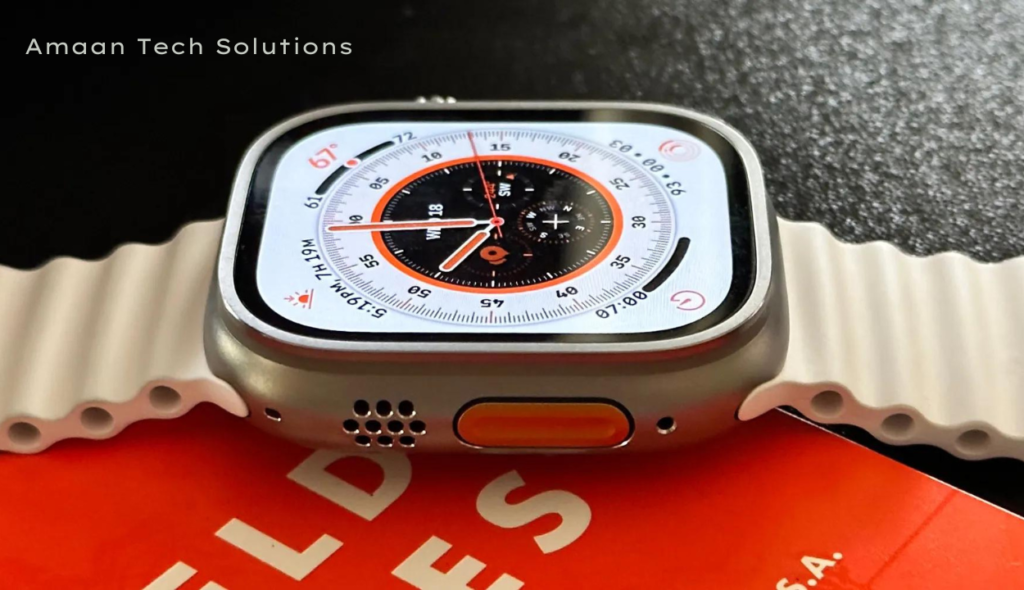
Introduction How Long Do Apple Watches Last
Apple Watches are nifty gadgets that have become increasingly popular in recent years. But one common question many people have is, “How long do Apple Watches last?” Well, let’s dive into it
Apple Watches, like any electronic device, have a lifespan. This means they won’t last forever. However, several factors influence how long they’ll stay functional. Let’s explore these factors to give you a better understanding of what to expect from your Apple Watch.
Firstly, the build quality and materials used in manufacturing play a significant role. Apple is known for its high-quality products, and Apple Watches are no exception. They’re designed to withstand daily wear and tear, but like all things, they can degrade over time.
Secondly, how you use your Apple Watch matters. If you’re constantly pushing its capabilities by running power-intensive apps or exposing it to extreme conditions, it may not last as long as if you use it more moderately.
Another crucial factor is software updates. Apple regularly releases updates to improve performance, add new features, and fix bugs. Keeping your Apple Watch up to date can help prolong its lifespan by ensuring it runs smoothly and securely.
Lastly, battery life is essential. The battery in an Apple Watch is rechargeable and will naturally degrade over time. However, with proper care and charging habits, you can maximize its lifespan.

Understanding Apple Watch Lifespan
Apple Watches, like any electronic device, have a finite lifespan influenced by several factors. Understanding these factors can help manage expectations regarding the longevity of your device.
Factors Affecting Longevity
Several factors impact the lifespan of an Apple Watch. These include battery life, physical wear and tear, and technological advancements. While Apple continuously innovates its products, older models may become obsolete sooner due to newer features and software updates.
Battery Life
The battery life of an Apple Watch is a crucial aspect of its lifespan. With regular use and charging cycles, batteries degrade over time, leading to reduced capacity and performance. However, advancements in battery technology with newer models often result in improved longevity.
Physical Wear And Tear
Like any wearable device, Apple Watches are subject to physical wear and tear from daily use. Scratches, bumps, and exposure to moisture or extreme temperatures can affect their durability and lifespan. Choosing the right protective accessories and practicing proper care can mitigate these issues.
Technological Advancements
As technology evolves, older Apple Watch models may become outdated more quickly. New features, software updates, and compatibility requirements for apps and services can render older models less functional over time. While Apple strives to support older devices, there’s a natural progression toward newer generations with enhanced capabilities.
Typical Lifespan Of Apple Watches
The lifespan of an Apple Watch can vary depending on the model, usage patterns, and maintenance. Here’s a general overview of the typical lifespan for different series and special editions.
Series 1 To 6
Apple regularly releases new iterations of its smartwatches, with each series offering improvements in performance, features, and design. While older models like the Series 1 may still function adequately for basic tasks, newer series tend to have longer lifespans due to advancements in hardware and software.
Special Editions And Materials
Special edition Apple Watches, such as those made from premium materials like ceramic or titanium, may have slightly longer lifespans due to their enhanced durability and craftsmanship. However, these models also come with a higher price tag, so the investment should align with your preferences and budget.
Maintenance Tips To Extend Apple Watch Lifespan
To maximize the lifespan of your Apple Watch, it’s essential to practice proper maintenance and care habits. Here are some tips to help prolong the longevity of your device.
Software Updates
Regularly updating your Apple Watch’s software ensures that it remains compatible with the latest features and security patches. These updates may also include performance optimizations that improve battery life and overall functionality.
Cleaning And Care
Keep your Apple Watch clean by regularly wiping it with a soft, lint-free cloth dampened with water. Avoid using harsh chemicals or abrasive materials that could damage the device’s finish. Additionally, consider investing in a protective case or screen protector to shield against scratches and impacts.
Avoiding Extreme Conditions
Exposure to extreme temperatures, humidity, or water can damage your Apple Watch and shorten its lifespan. Avoid wearing it while swimming or engaging in activities where it could be exposed to excessive moisture. Similarly, extreme heat or cold can affect the device’s battery and internal components, so take precautions to protect it in such environments.

Signs Your Apple Watch Needs Replacement
Despite proper maintenance, there may come a time when your Apple Watch needs to be replaced. Here are some signs indicating it might be time for an upgrade.
Sure, here’s a detailed table outlining the signs that indicate your Apple Watch needs replacement:
| Signs Your Apple Watch Needs Replacement | Description |
|---|---|
| Battery Drainage Issues | Noticeable rapid depletion of battery life despite normal usage patterns and optimization attempts. |
| Physical Damage | Visible signs of physical damage such as cracks, dents, or scratches on the screen or body of the Apple Watch, indicating potential internal component issues. |
| Unresponsive Screen or Buttons | Inability to interact with the Apple Watch screen via touch or malfunctioning buttons, despite troubleshooting efforts. |
| Persistent Software Glitches | Frequent crashes, freezes, or other software-related issues that persist even after software updates and resets, hinting at underlying hardware problems. |
| Water Damage | Symptoms such as screen discoloration, erratic behavior, or failure to charge after exposure to water, suggesting internal damage due to water ingress. |
This table provides detailed descriptions of each sign, aiding in better identification of issues with your Apple Watch.

Frequently Ask Questions About How Long Do Apple Watches Last
1. How Long Does The Battery Of An Apple Watch Last ?
The battery life of an Apple Watch can vary depending on usage and model. On average, an Apple Watch battery can last between 18 to 24 hours on a single charge.
2. What Factors Affect The Longevity Of An Apple Watch ?
Several factors can influence the lifespan of an Apple Watch, including usage patterns, battery health, software updates, and environmental conditions.
3. How Often Should I Charge My Apple Watch ?
It’s recommended to charge your Apple Watch nightly to ensure it has enough battery life for the following day. However, occasional top-ups throughout the day may be necessary for heavy usage.
4. Can I Replace The Battery In My Apple Watch ?
While Apple does not provide user-replaceable batteries for Apple Watches, battery replacement services are available through authorized service providers. Battery replacement may become necessary after several years of use.
5. How Long Do Apple Watches Typically Remain Functional ?
Apple Watches are designed to remain functional for several years with proper care and maintenance. However, like all electronic devices, their performance may degrade over time.
6. What Can I Do To Extend The Lifespan Of My Apple Watch ?
To prolong the lifespan of your Apple Watch, it’s essential to keep it updated with the latest software, avoid exposing it to extreme temperatures or moisture, and handle it with care to prevent physical damage.
7. Will Future Software Updates Affect The Performance Of Older Apple Watch Models ?
While Apple strives to ensure compatibility with older devices, newer software updates may impact the performance of older Apple Watch models to some extent. However, Apple typically optimizes updates to work as efficiently as possible on all supported devices.
8. Can I Use My Apple Watch After Its Battery No Longer Holds A Charge ?
If the battery of your Apple Watch no longer holds a charge, you may still be able to use it while it’s connected to a power source. However, for optimal functionality, it’s recommended to have the battery replaced by a certified technician.
9. How Can I Check The Health Of My Apple Watch Battery ?
You can check the health of your Apple Watch battery through the Battery Health feature in the Apple Watch app on your paired iPhone. This feature provides information on the current capacity and peak performance capability of your battery.
10. What Should I Do If My Apple Watch Experiences Significant Battery Drain ?
If you notice a significant decrease in battery life on your Apple Watch, try restarting both your Apple Watch and iPhone, updating to the latest software version, and adjusting settings such as background app refresh and display brightness to optimize battery usage. If the issue persists, contact Apple Support for further assistance.
Conclusion
- In conclusion, the lifespan of Apple Watches varies based on usage patterns and care.
- Generally, with proper maintenance and regular software updates, an Apple Watch can last for several years. However, factors such as battery degradation and technological advancements may impact its longevity.
- Users can prolong the lifespan of their devices by avoiding extreme conditions, keeping them clean, and handling them with care.
- Ultimately, while there’s no fixed expiration date, users can maximize the lifespan of their Apple Watches through responsible usage and timely maintenance, ensuring they continue to serve their purpose effectively for an extended period.

Amaan Warraich is a tech fanatic and creator enthusiastic about exploring the ultra-modern advancements in technology. With a background in laptop technological know-how, Amaan delves into topics ranging from synthetic intelligence to cybersecurity, aiming to make complex concepts accessible to all. Through his paintings, he strives to encourage interest and innovation inside the ever-evolving global of generation.

